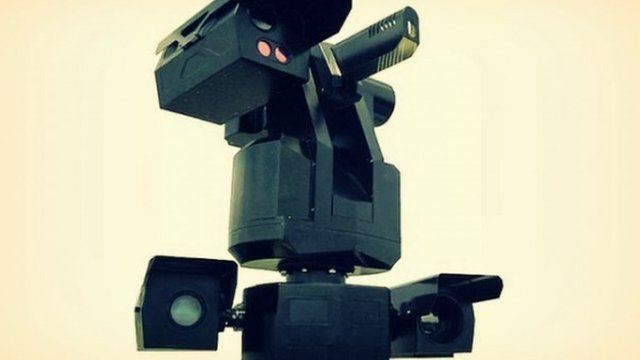

The difference now is that some models are ready to be field tested. Myriad concepts of LAWS for air, ground, sea and space use have long been speculated about. The Future of Life Institute, a think tank based in Cambridge, Massachusetts, that is focused on threats to humanity posed by AI and which organized the 2017 open letter to the United Nations, makes the distinction by saying, “In the case of autonomous weapons the decision over who lives and who dies is made solely by algorithms.” On the other hand, LAWS - derided by critics as “slaughterbots” - empower AI to identify, select and kill targets absent human oversight and control. In each case, a human operator determines the target, but a machine completes the attack. Semi-autonomous weapons like self-guided bombs, military drones or Israel’s famed Iron Dome missile defence system have existed for decades. No date is set for the forum’s next meeting. “At the present rate of progress, the pace of technological development risks overtaking our deliberations,” warned Switzerland’s representative as the latest conference wrapped up in Geneva. The failure continues eight years of unsuccessful efforts toward either regulation or an outright ban. In December 2021, the Sixth Review Conference of the UN Convention on Certain Conventional Weapons (CCW), a 125-member intergovernmental forum that discusses nascent trends in armed conflict and munitions, was unable to progress talks on new legal mechanisms to rein in the development and use of LAWS. It appears that this thesis could soon be tested. Three years later, he was among 116 experts in AI and robotics that signed an open letter to the United Nations warning that LAWS threaten to “permit armed conflict to be fought at a scale greater than ever, and at timescales faster than humans can comprehend.” They raised alarms, as have American philosophers Sam Harris and Noam Chomsky, and tech magnate Elon Musk.Ī major investor in artificial intelligence (AI), Musk told students at the Massachusetts Institute of Technology in 2014 that AI was the biggest existential threat to humanity. In the world of imagination beyond the page and screen, savants Stephen Hawking and Bill Gates also saw a looming threat in real-life killer robots, technically classified as lethal autonomous weapons systems (LAWS).
#Autonomous smart sentry gun android#
Later came Skynet’s murder machines in the Terminator franchise, the cephalopod Sentinels in The Matrix and the android Gunslingers of Westworld. Dick’s 1968 novel Do Androids Dream of Electric Sheep? (the inspiration for the Blade Runner movies). The article concludes that autonomous weapons are unable to make proportionality assessments on an operational or strategic level on their own, and that humans should not be expected to be completely absent from the battlefield in the near future.There exists no more consistent theme within the canon of modern science fiction than the fear of the “killer robot,” from Isaac Asimov’s 1950 collection of short stories, I, Robot, to Philip K. It analyses aspects of the proportionality rule that would militate against the use of autonomous weapons systems and aspects that would appear to benefit the protection of the civilian population if such weapons systems were used.

This article assesses the question whether the rule on proportionality in attacks would preclude the legal use of autonomous weapons. The principle of proportionality is sometimes cited as an important obstacle to the use of autonomous weapons systems in accordance with the law. Autonomous weapons systems raise the question of whether they could comply with international humanitarian law. Once they are deployed, these weapons will use artificial intelligence to select and attack targets without further human intervention. Given the swift technologic development, it may be expected that the availability of the first truly autonomous weapons systems is fast approaching.


 0 kommentar(er)
0 kommentar(er)
